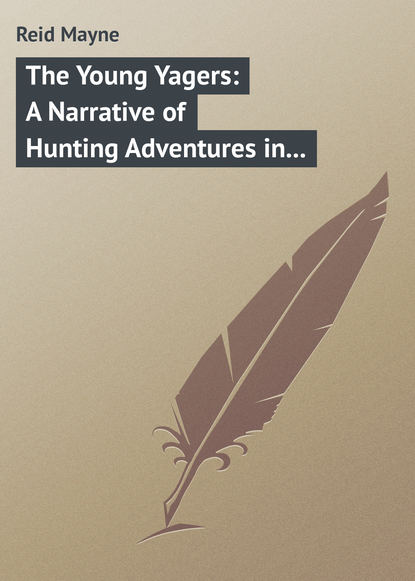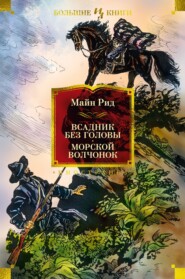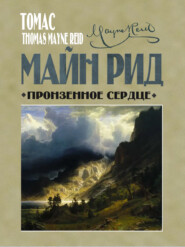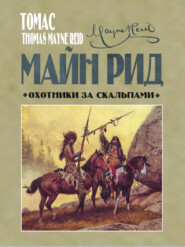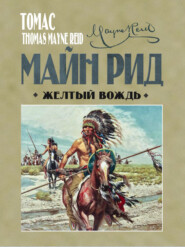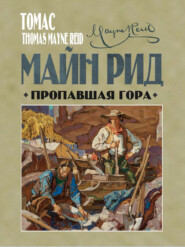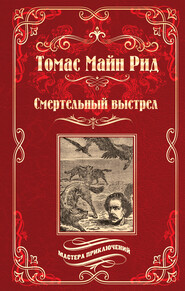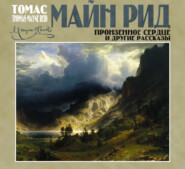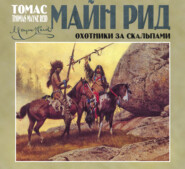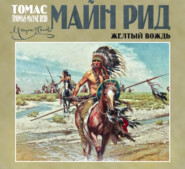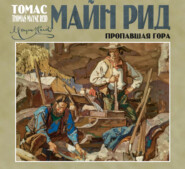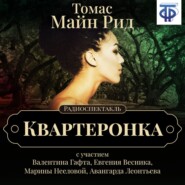По всем вопросам обращайтесь на: info@litportal.ru
(©) 2003-2024.
✖
The Young Yagers: A Narrative of Hunting Adventures in Southern Africa
Настройки чтения
Размер шрифта
Высота строк
Поля
What was it after? What prey was it in pursuit of?
On watching it for a few moments, Hans saw to his great surprise that it was after the ostriches!
It was going the same way they had gone, its sharp snout set towards, and its eyes evidently bent upon, them. Whenever they stopped it did the same, squatting down as it did so, as if to avoid their observation; and when they moved on, it also trotted forward, halting at intervals behind stones and bushes and earnestly regarding the birds in advance. Beyond a doubt it was trailing them! But what could this little creature want with the ostriches? Certainly not to attack them, though it was following after them just as a fox would a covey of partridges.
It could not be that, however; as a kick from the mighty leg of one of these birds would have hoisted the fennec fifty yards over the plain, like a ball from a cricket-bat.
No; it could not be following them with hostile intentions, – puny pigmy that it appeared beside the big camel-birds!
For what, then, was it trailing them? Of course it was not running on the scent, but the view. On their track it certainly was, and as certainly was it “dogging” them. For what purpose?
This was just what the naturalist Hans wished to know; and he remained closely observing the movements of this miniature “microscopic” fox.
Talking of a microscope reminds me that Hans at that moment took out of his pocket a telescope, – a small one, which he habitually carried. This he did, because, in a few minutes, the ostriches were very distant over the plain, and their pursuer the fennec was no longer visible to the naked eye. With the glass, however, Hans could still make it out, and could see that it was manoeuvring just as when it passed him. All at once the ostriches came to a stop; and, after an apparent consultation among themselves, the cock squatted down, and his long legs were no longer seen. He was flat down upon his breast, and even through his small pocket-glass Hans could tell that his body looked more spread and bulky than before. Was he covering eggs? Was there a nest? The appearance of the ground about the sitting bird favoured that belief. There was a slight prominence around the body of the bird having the semblance of a bird’s nest; but Hans knew that the nest of the ostrich is of very simple construction, – a mere cavity scratched out in the sand, and scarce to be recognised from any great distance. Several white objects lying around the spot led Hans to the conclusion that there was a nest. These objects did not seem larger than “jack-stones,” but Hans, calculating well the distance that separated them from his eye, believed them to be ostrich-eggs, and therefore as large as paving-stones. Hans knew that around the nest of the ostrich scattered eggs are usually found – said by some to be there laid as a deposit for the food of the expected progeny during their early days of chickhood!
The two hens, after moving about awhile also squatted down, but they appeared only to kneel with their great legs doubled under them; whereas the cock sat low and flat upon his breast. This only more convinced Hans that there was a nest, and that the cock ostrich was taking his turn of duty, while the hens were simply gone to roost in the usual manner.
That the cock covered the eggs was nothing surprising to the young naturalist, who knew that it is the habit of the male of these birds to do so, and that he usually takes his turn during the night, when it is colder, and his greater size and strength are required to keep the eggs warm, as well as to protect the nest from prowling beasts of prey. One or other of the hens would very likely relieve him about daybreak. Of course both the hens were mothers in prospective of the future brood, as the cock ostrich is a terrible “Mormon;” and frequently does the polygamous on a large scale, having sometimes as many as a dozen wives. Our old fellow was rather a moderate Mormon, as he appeared to be satisfied with two – though bigamy, no doubt, is quite as sinful as polygamy.
Hans concluded that there was a nest, and full of eggs in process of being hatched. It was no evidence against this, that the birds had been away from it together. The day had been a very warm one, and during the middle part of the day – particularly in hot weather – the ostrich wanders away from its eggs, leaving the sun to do its work for it. The hotter the country, the less does the ostrich require to “set;” and in parts of Africa within the torrid zone where the heat reaches a very high degree, the ostrich has very little to do with the hatching of its eggs, but buries them in the burning sand, and makes the sun its “incubator!”
But what had become of our fennec – poor little fellow?
So asked Hans of himself, as he swept the plain with his telescope. While watching the late movements of the birds, he had altogether forgotten the beast.
After a time he was just able to make out its small whitish body stretched upon the ground, under the lee of a little bush, and apparently resolved upon passing the night there. Had there been any hole near, it would have preferred lodging in that – for the fennec is an animal that makes its home in a “burrow.”
Night had suddenly come on, and the darkness prevented Hans from observing farther the movements of either beast or bird; so putting up his glass, he rejoined his companions in the camp.
Chapter Twelve.
The Wingless Birds
Hans, on returning to the camp, gave an account of what he had seen. All were interested in the relation, but particularly the boys Klaas and Jan, who were not over satisfied that they had not themselves been witnesses of the affair. Hans might very well have told them of it. They wouldn’t have minded being waked up to see the ostriches, especially as they passed so near. It wasn’t every day one could get such a view of these fine birds – they were so shy no one could get near them, and Hans might very well have come into camp and told them, or called them, Klaas and Jan, to the spot. Hans didn’t care whether they ever saw any thing worth seeing – he didn’t.
So grumbled Klaas and Jan, because Hans had not waked them out of their sweet siesta, to see three ostriches stalking over the plain, and not doing any thing in particular.
But boys are boys, and so long as they are boys, they will feel a wonderful interest in birds – especially when these birds stand nearly ten feet high, and weigh three hundred pounds, as ostriches do.
Had it been a buffalo, or a giraffe, or even an elephant, neither Klaas nor Jan would have so much cared. Beasts are all very well in their way, and may interest full-grown hunters, like Hendrik and Groot Willem, but for “boy hunters,” with light fowling-pieces and Number 5 shot, birds are the game – though their Number 5 shot would hardly have tickled an ostrich.
No matter for that. They wanted to see the great camel-bird. Hans ought to have apprised them. It was “right mean” of him not to do so, – right mean, said Jan, and Klaas backed the opinion.
How long they might have grumbled, and given vent to their reproaches, can only be guessed at; but the conversation turning upon ostriches assumed a very pleasing character; and Klaas and Jan, becoming deeply interested in it, soon got over their little “miff” with Hans – especially as it was he who was now interesting them. Upon the subject of ostriches. Hans had read a good deal, and was well acquainted with the character and habits of these most interesting birds.
Swartboy stood next in his knowledge of the ostrich, for Swartboy in early life had been a “dweller of the desert,” – the home of the Bushman as well as the great camel-bird. Swartboy was only too happy at the opportunity thus offered of showing off his knowledge, for the late wonderful performances of his Kaffir rival had quite thrown him into the shade.
So what with Hans’s book-knowledge and Swartboy’s practical experience, the young yägers became pretty well acquainted with the whole “history” of the bird.
“The ostrich,” said Hans, “is an African bird, though also found in the adjacent countries of Asia. Several species of birds somewhat like it, belonging to South America, Australia and the islands of the Indian Archipelago, have been called ‘ostriches’ in the language of travellers. I shall have a word about these presently.
“All over the African continent, as well as Arabia, Syria, and Persia, dwells the ostrich, wherever there are desert plains – for this bird is peculiarly a denizen of the desert, and never makes its home in wooded, marshy, or even fertile districts.
“It has been known from the earliest times, and must have been more numerous in the days of Heliogabalus than now, since that tyrant had the brains of six hundred ostriches served up at a single feast!”
“Oh, the glutton!” exclaimed Jan.
“What a gourmand!” echoed Klaas.
“I should think after the feast he had more brains in his stomach than in his head,” quietly remarked Arend.
“No doubt of it,” added Hendrik.
Hans continued: —
“The ancients knew the ostrich as the ‘camel-bird,’ (Struthio camelus). This name was given to it on account of its fancied resemblance to the camel; and in its hoof-like two-toed feet, its long naked thighs and neck, and the pad or cushion on its chest, corresponding to the callosity on the breast of the camel, it does bear a resemblance to this animal. Like it, too, the ostrich is formed for the desert. Aristotle and Pliny described the ostrich as half bird, half quadruped.”
As soon as Hans had given the more scientific part of the natural history of the ostrich, Swartboy’s knowledge of the habits of the bird was produced, and from both were collected the details that follow.
Ostriches are gregarious – flocks of fifty may be seen upon the plains, peacefully associating with zebras, quaggas, wildebeests, blue wildebeests, and several other plain-frequenting antelopes.
The males are polygamous, and usually have from two to six wives. These lay twelve to sixteen eggs each, in a nest which is only a hole scooped out in the sand about six feet in diameter. Not more than half the eggs are deposited in the nest. The others lie scattered around, and are never hatched.
Swartboy alleged that these were intended to feed the young when they came out of the shell: but Hans dissented from this opinion. The naturalist believed that those scattered about were superfluous eggs, which were not deposited in the nest because one bird could not cover all that the whole family of hens would lay; and that once the “setting” was complete, the superfluous eggs were dropped about anywhere.
There is a good deal of probability in this conjecture of the young naturalist.
It is certain that the scattered eggs are those last laid, and that the birds continue to drop them after the incubation has commenced, but whether they form the food of the young is a disputed point. One bird can cover from thirty to forty, placed as they usually are upon their ends, and Swartboy said that he had often found this number in a nest, but more frequently thirty was the “setting.”
The male takes part in the incubation, sitting during the night; when his greater size and strength enable him the better to protect the eggs from cold. The “hens” relieve one another during the day, but when the sun is hot all leave the nest to itself, for hours at a time.
Hans stated, that in the more tropical regions the eggs are forsaken for long spells, and the hot sand and sun do the work of the parent birds; and that on this account the period of incubation is not fixed, but ranges from thirty to forty days.
The young when hatched are well developed, and in a day or two become as large as guinea-hens, leaving the nest and running about in charge of the parent birds.
At this period the old ones are very careful of their offspring. When an enemy approaches, the hen that has charge of the flock will endeavour to attract the intruder upon herself, making a feint of being wounded, spreading and drooping her wings, and tumbling from side to side along the ground, while the cock draws off the chicks in an opposite direction! Partridges, wild ducks, and many other birds, do the same.
The eggs of the ostrich are of a dull white colour. They are not all of equal size, nor are the birds either. A medium-sized ostrich-egg is six inches long, and weighs about three pounds. It is excellent eating when broiled among hot cinders, and is a meal for a man, – some say two, some three, while others allege that it is not enough for one. But “a meal for a man” is a very uncertain standard, and depends a good deal on the capacity of the man’s stomach and the state of his appetite. A better standard is found in the estimate that one ostrich-egg is equal in quantity to twenty-four of the common domestic fowl.
The shells of the ostrich-eggs are very strong, and used by the Bushmen and other natives of the desert as water-vessels – the only vessels that some of them have.
A full-grown cock ostrich stands over nine feet in height, and weighs three hundred pounds. The legs of such a bird are immensely thick and muscular, and the thigh-joint equals in size the largest leg of mutton.
The ostrich is thought to be the swiftest runner in creation, but there are doubts about this. Certain it is that it cannot be overtaken by a horse in a fair tail-on-end chase; but the bird makes “doubles” in running, and by observing these, the mounted hunter sometimes gets near it by making a cut upon it, and delivers his fire as it passes. To run an ostrich down, however, is considered an impossibility, even by the Arab on his fleet steed. Its bottom is equal to its speed, as it can keep up the pace for hours together.
The muscular strength of its great long legs is well adapted for running fast and far; and while on the run, its hoofs make a clatter like those of a trotting horse, while large stones are flung violently to the rear! When at full speed it spreads its white wing-plumes, raising them over its back, but this is only done to balance it, as it could not fly a single yard.
Its principal weapon of defence is the leg with its hoof-like foot. With this it can kick like a mule, and the blow will break a man’s leg, or send the breath out of his body, as would the kick of a horse!





